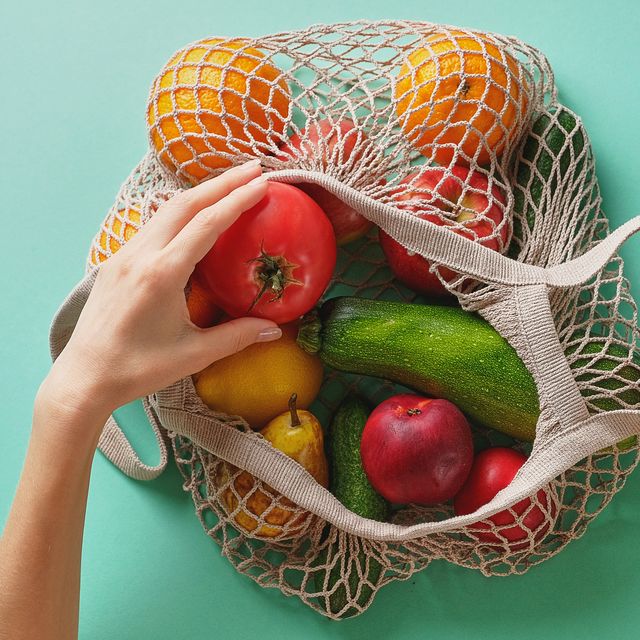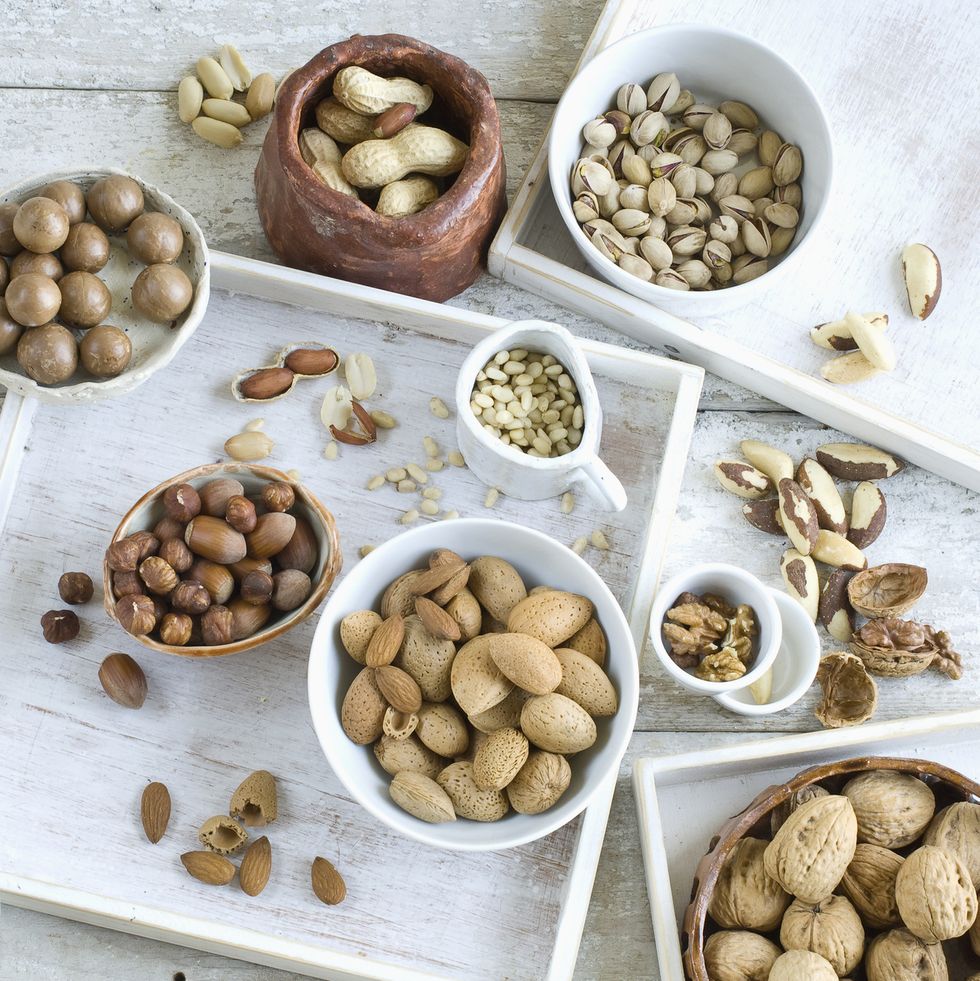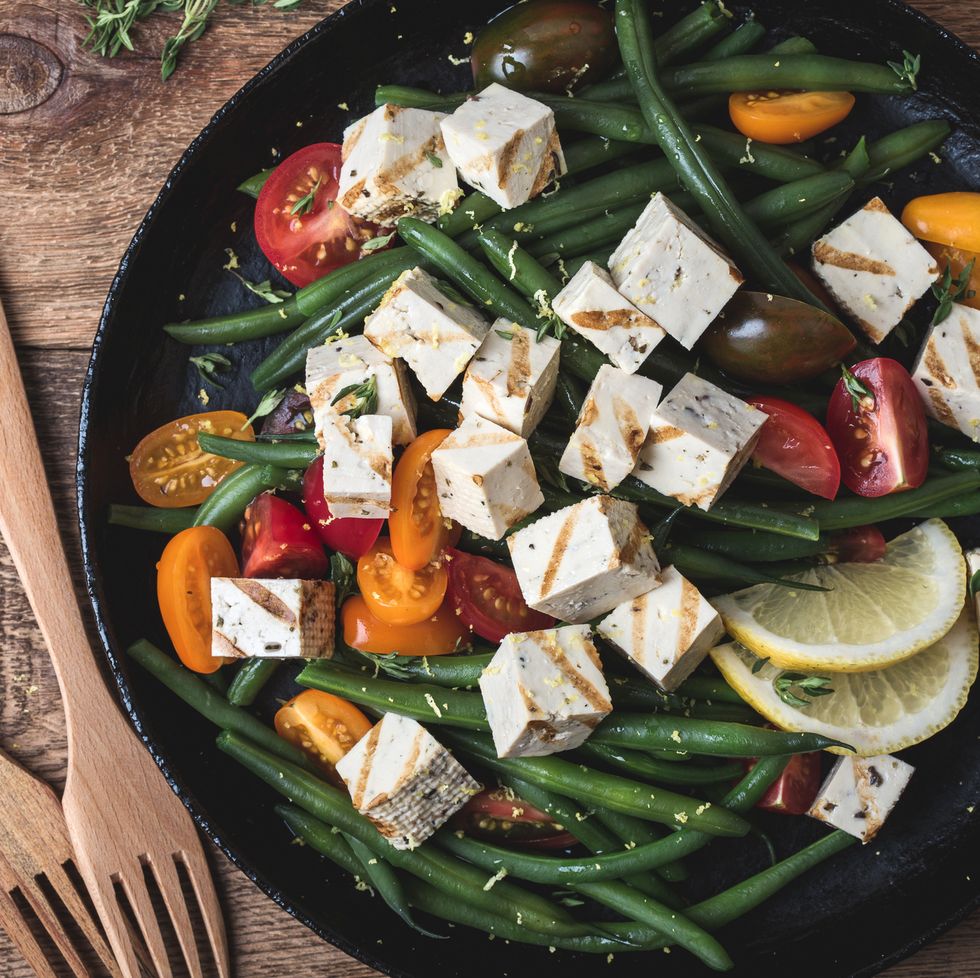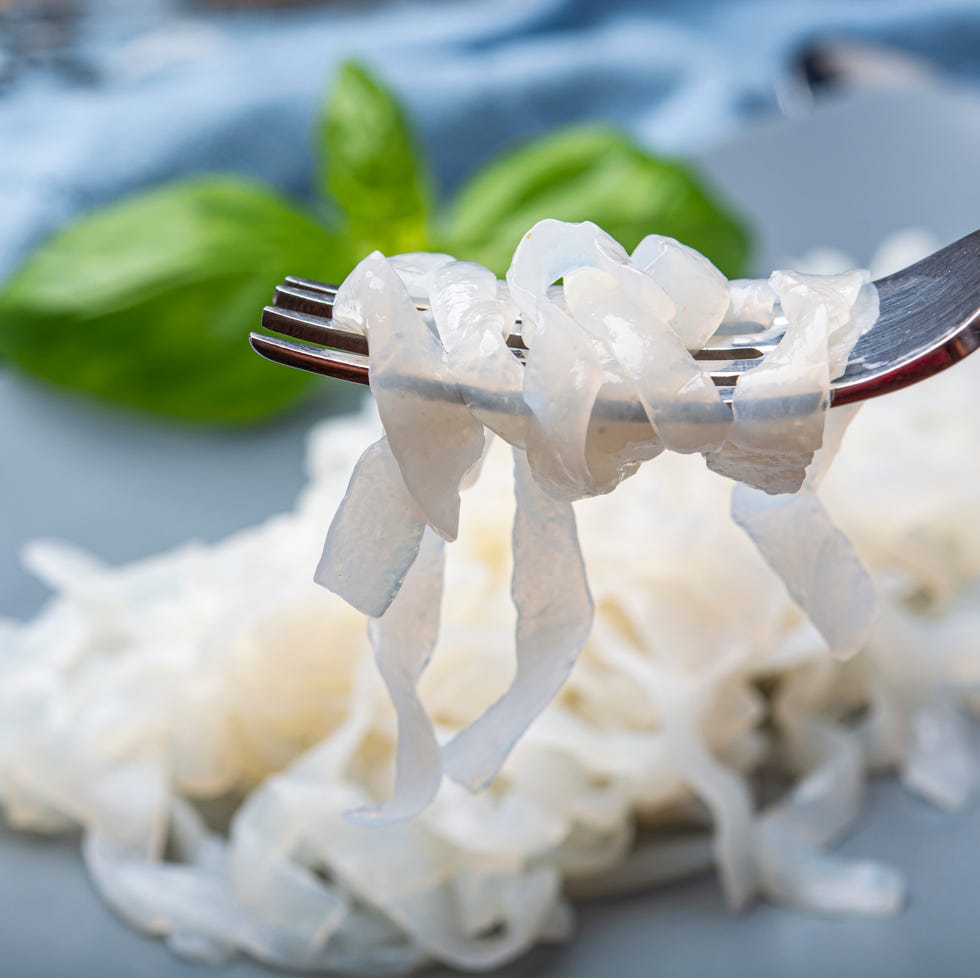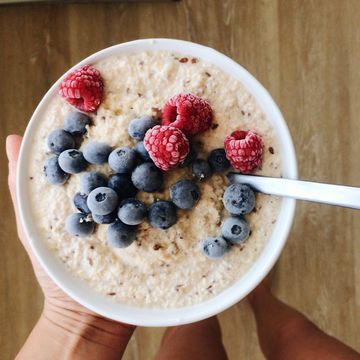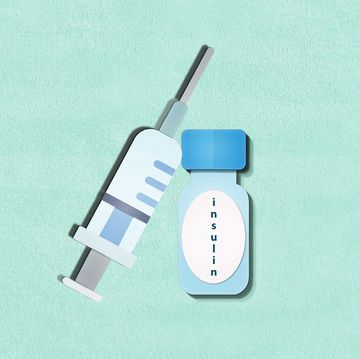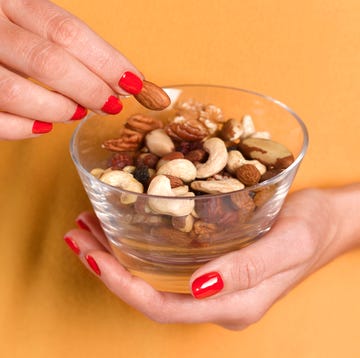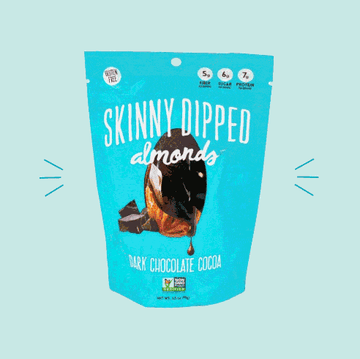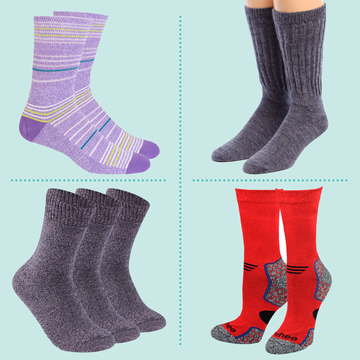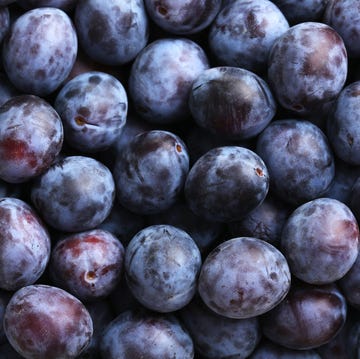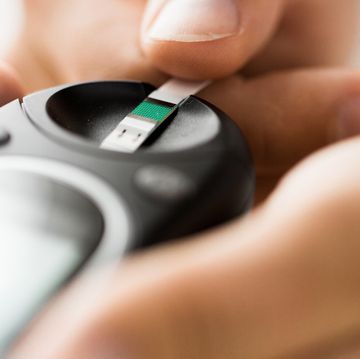It happens to millions of Americans each year, and it might happen to you: Your doctor sits you down and tells you that you've been diagnosed with type 2 diabetes. In fact, of the 37 million Americans who have diabetes, the vast majority — nearly 95% — have type 2, which is most often diagnosed in midlife and beyond, but can also be discovered when you're younger.
Yes, it can feel overwhelming: You may need to start new medications and you'll have to consistently monitor your blood sugar levels. But the biggest question on your mind may be, What on earth can I eat? Luckily, the answer is: plenty of delicious food. There are some things you'll have to cut down or eliminate, like sugary sodas and deep-fried foods, but the list of good-for-your-blood-sugar foods is extensive and mouth-watering.
Type 2 diabetes foods list:
1. Leafy greens
Superstar greens such as spinach, kale, Swiss chard and collard greens can be the hearty side to your dinner, or even the star of your plate, as the base of a salad or protein bowl. “Non-starchy vegetables are great for adding lots of volume, and fiber to a plate with fewer calories,” says Colleen Johnson, M.S., R.D.N., adult diabetes educator at Joslin Diabetes Center in Boston. “They also have fewer carbohydrates than starchy vegetables.”
2. Salmon
Everyone's favorite pink-hued fish is a superstar for people with type 2 diabetes because it's rich in omega-3 fatty acids, says Samantha Cassetty, R.D.N., nutrition and wellness expert and the author of Sugar Shock. Unfortunately, we tend to consume too many omega-6 fatty acids (which promote inflammation) and not enough omega-3s because they’re harder to come by in foods. If salmon is a stretch for you, Cassetty points out that canned tuna is also a good source of omega-3s. (Just keep it to two or three weekly servings of light tuna to limit your mercury exposure.) Need inspiration? Check out these easy salmon dinner recipes.
3. Strawberries
No need to give up dessert when you have type 2 diabetes — just be sure to satisfy your sweet tooth with foods that get their yummy flavor naturally, like bright-red strawberries. Berries have a low glycemic load while being high in fiber and antioxidants.
4. Quinoa
Quinoa is super easy to cook — keep a batch of it in your fridge and top it with veggies, beans and lean proteins for a satisfying meal. Quinoa is actually a seed, but it’s considered to be a protein-rich whole grain. In fact, one cup of cooked quinoa has 8 grams of protein and 5 grams of fiber. Plus, research shows that eating it daily can help stabilize blood glucose levels.
5. Broccoli
There’s a reason parents try so hard to get gets to eat this green veggie—broccoli is really good for you! It’s high in nutrients like vitamin C and potassium as well as fiber. “If you're not like that crazy about, let's say, steamed broccoli, maybe you should try it roasted with olive oil and some everything-bagel seasoning,” suggests Cassetty. “I think we forget that food should taste good. We can play it up.”
6. Nuts
Almonds, walnuts, pistachios, hazelnuts, cashews … take your pick — they're all filled with healthy fats. Nuts can be incorporated into recipes (like this quinoa risotto with arugula-mint pesto) or eaten on their own. “When we're talking to people about bedtime snacks, a handful of unsalted nuts is a really good fit,” says Kathleen Wyne, M.D., Ph.D., professor in the division of endocrinology and metabolism at The Ohio State University Wexner Medical Center.
7. Lean meat
“Lean proteins may help reduce and delay spikes in blood sugar,” says Johnson. Skinless chicken and turkey are more obvious choices, but you can also consider lean cuts of other meat like sirloin tips or pork loin. These give you a healthy portion of proteins while containing less saturated fat than ground beef, bacon, sausages, and other, heftier cuts of meat.
8. Cottage cheese
You may have heard that your grandmother’s favorite snack is having a big comeback. The thick, creamy dairy product is packed with protein and calcium, which research says may have a positive effect on insulin levels in people with type 2 diabetes. Including dairy products in your diet may even lower your risk for getting type 2 diabetes in the first place. Top your low-fat curds with sliced fruit or a sprinkle of cinnamon—skip the sugar or sweetened jams—for a tasty treat.
9. Zucchini
Zucchini noodles (a.k.a. zoodles) are popular for a reason. Not only do they pair well with nearly any pasta sauce, they’re also rich in antioxidants and fiber which makes them a great lower-carbohydrate alternative to traditional noodles. Check out dozens of delicious recipes right here.
10. Eggs
Eggs fall into the lean protein category mentioned above, and they are incredibly versatile (scrambled, hard-boiled, cooked into shakshuka...). They are an affordable protein that can balance out any meal, adding essential vitamins and minerals, plus the antioxidants lutein and zeaxanthin, which are important for eye health. And all this at just 80 calories each.
11. Cauliflower
Cauliflower is well-known as a substitute for carbohydrate-heavy foods like white rice because its texture is malleable and it can pick up a variety of flavors while you’re cooking. One cup, chopped, has 2 grams of fiber, 2 grams of protein and just 5 grams of carbohydrates. See for yourself by trying one of these hearty cauliflower-focused recipes.
12. Tofu
A diet that includes soy-based foods (like tofu, edamame or soy milk) is linked to a lower risk of type 2 diabetes, according to research. Tofu makes for a great high-protein meat substitute while edamame can be an excellent salad topper.
13. Hummus
This creamy plant-based spread made of chickpeas is loaded with fiber and protein. The healthy monounsaturated fat from the sesame-seed based tahini and olive oil in hummus also helps lower LDL cholesterol and protect the heart. Keep a tub in the fridge for a savory snack any time of day—it’s perfect scooped up with a baby carrot, celery stick, or whole grain cracker.
14. Tomatoes
There’s nothing better than a nice tomato, mozzarella and basil salad, right? Fortunately, one study found that when people with type 2 diabetes eat 200 grams of raw tomatoes (or roughly one medium-size tomato) every day, their blood pressure improved and their levels of a protein that makes up HDL cholesterol (the “good” kind) increased so it may help lower their risk of heart disease.
15. Olive Oil
Olive oil is known for the high amount of monounsaturated fatty acids it contains and research shows the oil can be beneficial for controlling blood sugars. You can cook other foods in it or use it as a base for homemade low-sugar salad dressings.
16. Shirataki noodles
Check your local Asian food market, or even in your regular supermarket for translucent shirataki noodles, which originated in Japan and come from a plant native to Asia. “Shirataki noodles are going to be lower in carbohydrate, so for some people that might be satisfying enough and sort of give them that pasta vibe without needing to have some actual pasta,” says Cassetty. You might also want to check out lentil or chickpea pasta if you’re looking for other pasta alternatives.
17. Beans
Yes, beans contain carbohydrates, but they also contain plenty of fiber and protein without any of the saturated fats you’ll find in animal protein sources. In fact, one study found that when people added at least 1 cup of legumes to their daily diet, their blood sugars improved better than folks who added a cup of whole-wheat foods to their daily meal plan. Just try to remove as much salt as you can by rinsing canned beans before you eat them.
18. Farro
Foods such as farro, barley, spelt and millet are often referred to as “ancient grains.” “It’s like a new trend to talk about ancient grains, but some of these grains are actually really cool to add to the plate,” says Johnson. “A lot of times when they're diagnosed with diabetes, people want to stay away from carbohydrates in general or they tend to think carbohydrates are bad. In reality, there's a lot of complex carbohydrate sources that would actually be really good for them.” She says the extra fiber that complex carbohydrates have will help you stay full and keep your blood sugar balanced.
19. Apples
Johnson says she gets asked about fruit a lot when it comes to diabetes-friendly foods. The key is to choose fruits like apples that have edible skin (and then eat the skin!). “The skin on fruits contains a lot of fiber, so when something has more fiber it tends to help delay the spike in blood sugar,” she explains. Pairing it with unsweetened peanut or almond butter will also help balance your glucose levels.
20. Garlic
Garlic is like a secret weapon for eating when you have type 2 diabetes. For starters, research has found that eating garlic can help improve fasting blood sugars. On top of that, it can really kick up the flavor of vegetables you may not be used to eating and make them more enjoyable.
Bottom line: As you learn to live with your new diagnosis, think of it as a great reason to upgrade your diet—this is an excuse to try new foods and explore recipes using some of your old faves, like salmon and strawberries. “A lot of people who have problems with diabetes don't have the greatest relationship with food to begin with so we have to really focus on a positive approach to food and make them feel comfortable and safe with what they are eating,” says Dr. Wyne. Give yourself some grace and try to incorporate as many of the foods above into your diet as you can.
FAQ:
What exactly is type 2 diabetes?
It all has to do with the hormone insulin: When you eat, your body turns food into glucose, which the insulin then sends to other parts of your body that need to use it as fuel or storage for later use. In a person with type 2 diabetes, the cells in your muscles, fat and liver don’t respond to insulin properly or your pancreas doesn't produce enough insulin, so an excess of glucose remains in your bloodstream, which can have dangerous consequences if left untreated.
What foods should I avoid or limit?
While there are plenty of sweet and savory foods you can enjoy when you have diabetes, there are a few categories that you should cross off your shopping list (or only indulge in once in a while as a small treat). These include:
- Fried foods: Foods that are immersed in cooking oil, such as fried chicken, French fries, and donuts, are high in both simple carbs and fat—a particularly dangerous combination for people with diabetes. Research has shown that the more fried food you eat, the greater the risk for type 2 diabetes.
- Sweetened beverages: Skip the soda, sports drinks, and fruit juices with added sugar, which can cause your blood sugar to spike, and drink water or unsweetened iced tea instead.
- Candy and pastries: Cakes, cookies, pies, and candies are sweet for a reason—they are usually created with excessive amounts of added sugar. To satisfy your sweet tooth, stick with whole fruits or cookies created with diabetic needs in mind.
- High-sodium foods: In addition to watching the amount of simple carbs in your diet, it is important to pay attention to salt, which can impact blood pressure and heart disease, both of which are concerns for people living with type-2 diabetes. Check for sodium content in canned goods including soup, vegetables, and tuna, bottled sauces, frozen meals. pickles, olives, and processed meats such as bacon, hot dogs, and sausage. Aim for 2300 mg or less per day.
Why does it matter what kind of food I eat with type 2 diabetes?
What you put on your plate, and in your mouth, can make a huge difference in controlling your diabetes, says Johnson, who points out that food choices can help you manage your blood sugar levels and keep those levels within safe ranges. “Diabetes can be treated with many kinds of medications and different types of insulin, but the diet is really going to be key no matter what type of treatment they undergo,” she says.
The key to a healthy eating plan for type 2 diabetes involves monitoring your intake of carbohydrates (including white bread, rice and potatoes — as well as sugar), because carbs are most easily converted into glucose and research shows they make up a large portion of the typical American diet. “I like to remind people that carbohydrayes are team players,” says Samantha Cassetty, R.D.N., nutrition and wellness expert and the author of Sugar Shock. “I think the biggest problem that I see is carbs on carbs on carbs. So, oatmeal with fruit with milk — those are all examples of foods that contain carbohydrates. Even our wholesome, fiber-rich carbs like fruits and vegetables really ideally operate best when they're paired with a teammate.” Cassetty says that this method not only provides you with a variety of nutrients from different types of foods, but it also helps balance your blood sugar while helping you stay fuller longer.
The American Diabetes Association recommends filling half your plate with non-starchy vegetables, a quarter of it with complex carbohydrates and the last quarter with a source of protein. Cassetty points out that it's best to talk to your doctor or a nutritionist to figure out the carbohydrate range that will work best for your body.
Why trust Good Housekeeping?
This article was written by Kaitlyn Phoenix, a senior editor in the Health Newsroom at Hearst, who has more than a decade of experience writing about health and nutrition. She pored through research and interviewed several experts to sort through the best foods for people with type 2 diabetes. The article was then reviewed by Stefani Sassos, RDN, the director of the Good Housekeeping Institute's Nutrition Lab. Sassos holds a bachelor’s degree in nutritional sciences from Pennsylvania State University and a master’s degree in clinical nutrition from NYU, and has dedicated her life to helping others make sense of nutritional guidelines.
Kaitlyn Phoenix is a deputy editor in the Hearst Health Newsroom, where she reports, writes and edits research-backed health content for Good Housekeeping, Prevention and Woman's Day. She has more than 10 years of experience talking to top medical professionals and poring over studies to figure out the science of how our bodies work. Beyond that, Kaitlyn turns what she learns into engaging and easy-to-read stories about medical conditions, nutrition, exercise, sleep and mental health. She also holds a B.S. in magazine journalism from Syracuse University.
Stefani (she/her) is a registered dietitian, a NASM-certified personal trainer and the director of the Good Housekeeping Institute Nutrition Lab, where she handles all nutrition-related content, testing and evaluation. She holds a bachelor’s degree in nutritional sciences from Pennsylvania State University and a master’s degree in clinical nutrition from NYU. She is also Good Housekeeping’s on-staff fitness and exercise expert. Stefani is dedicated to providing readers with evidence-based content to encourage informed food choices and healthy living. She is an avid CrossFitter and a passionate home cook who loves spending time with her big fit Greek family.
